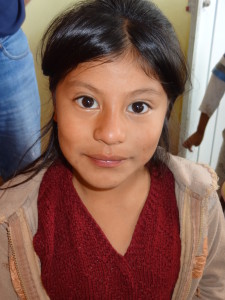 Families adopting from Mexico have a unique opportunity to keep their children connected to the rich Latin culture of the country. For a variety of reasons, including proximity to the United States and a growing population of Mexican Americans, it is not a difficult task for adoptive families to integrate Mexican culture and traditions into their homes. Following are some simple ideas:
Families adopting from Mexico have a unique opportunity to keep their children connected to the rich Latin culture of the country. For a variety of reasons, including proximity to the United States and a growing population of Mexican Americans, it is not a difficult task for adoptive families to integrate Mexican culture and traditions into their homes. Following are some simple ideas:
1. Cook Authentic Mexican Food Corn is a staple in Mexico and can be found at nearly every meal, many times in the form of corn tortillas. Tortillas are simple to make, containing only a few ingredients, and even young children can help. Find some recipes of traditional Mexican dishes and try them out. Some Mexican specialties include: Tamales, Menudo, Chile Verde, Carnitas and refried beans. The internet is a great resource for recipes!
2. Celebrate Mexican Holidays Learn about the holidays that are celebrated in Mexico and incorporate traditions into your own holiday celebrations. Some ideas to consider:
- Cinco de Mayo – This national holiday is celebrated on May 5, and commemorates Mexico’s unlikely defeat of the French in 1862. While celebrations are popular throughout Mexico on this day, Cinco de Mayo has become a popular day for celebrating Mexican culture in the United States. Try cooking some of the traditional foods mentioned above or have dinner at a Mexican restaurant; while you eat, have an age appropriate discussion about Mexican history and culture.
- Diez y Seis – One of Mexico’s most important holidays, Diez y Seis (Independence Day) is celebrated on September 16; every city and town holds a celebration consisting of parades, dances and festivals. Most families hang Mexican flags all over their home and enjoy a feast usually consisting of red, white and green foods (the colors of the Mexican flag). Try hanging the flag of Mexico in your own home and serving a red, white and green meal; the kids will have fun helping you think of colorful foods to prepare.
- Dia de los Muertos – Celebrated on November 1 and 2, Dia de los Muertos (Day of the Dead) is a day for celebrating and remembering those who are no longer with us. It is a time when Mexican families joyfully and lovingly remember their loved ones. Traditionally, families create offrendas (private altars) using sugar skulls, marigolds, and favorite foods and beverages in honor of their loved ones who have passed. On a smaller scale, it may be fun to decorate your kitchen table with a bouquet of marigolds and enjoy a treat of great-grandma’s favorite cookies.
3. Attend Local Cultural Events It is likely that you will find a local festival or event that incorporates Mexican culture and food. In Chicago, a Mexican Independence Day Parade is held annually; Philadelphia boasts a large Hispanic Festival each summer. Many larger cities have special events during Hispanic Heritage month, which spans from September 15 through October 15. Keep an eye out for opportunities near you.
4. Use Spanish in Your Home As your child grows, you might consistently tell him, “I love you,” in Spanish, count in Spanish, and learn colors in Spanish. Bi-lingual books and children’s DVDs are typically available at libraries and bookstores as well.
5. Keep Mexican Items around the House When in Mexico, many families purchase authentic Mexican items such as pottery, knick-knacks, blankets and flags for display in the home. Other authentic items from Mexico include silver jewelry, sombreros and musical instruments such as maracas and wooden flutes. Some families may want to designate a specific room in the house to display all of their items, and other families may choose to place items in various locations around the home.Hopefully, this short list will help spark additional ideas of your own. As your child grows, his/her interest in Mexico may develop, which may inspire your family to delve a little deeper into the rich culture and heritage that Mexico has to offer; you may even want to take your family on a trip to experience the culture of Mexico first hand!
Please contact us for more information on adopting from Mexico.
